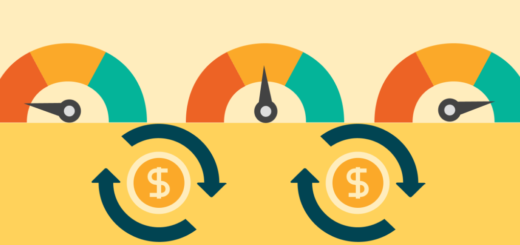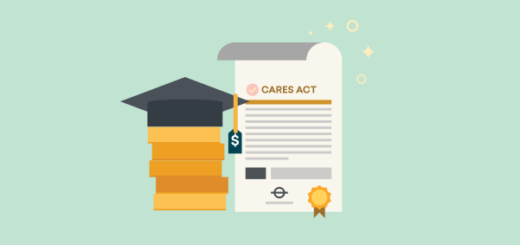How to Stop Student Loan Tax Garnishment
Our goal is to give you the tools and confidence you need to improve your finances. Although we receive compensation from our partner lenders, whom we will always identify, all opinions are our own. Credible Operations, Inc. NMLS # 1681276, is referred to here as “Credible.”
A student loan is typically considered delinquent after you miss one payment. If you continue missing payments for a certain period of time (270 days for most federal student loans and 120 days for most private student loans), your loan will enter default.
Defaulting on student loans can lead to severe consequences. For example, if you’ve defaulted on federal student loans, your income tax refund could be withheld — a process known as Treasury offset (sometimes also called tax garnishment). While it’s critical to deal with a student loan default as soon as possible, it’s especially important to take action before filing your taxes if you don’t want to risk having your refund withheld.
If you’re wondering how to stop student loan tax garnishment, here’s what you should know:
Will my tax refund be garnished due to student loans?
This depends on the type of defaulted student loans you have. While defaulting on private student loans won’t lead to a Treasury offset (but could lead to wage garnishment if your lender sues you), your tax refund could be garnished if you default on federal student loans.
If you’re behind on federal student loan payments, here’s when you can expect to enter default and potentially be at risk for a tax offset:
- Most federal student loans: 270 days past due
- Federal Perkins Loans: After missing a single payment
If your tax refund is subject to a Treasury offset, your loan holder should mail a notice to your last-known address 65 days before the offset is scheduled to begin — meaning you’ll have some time to possibly prevent the garnishment.
Tax refunds during COVID-19
Due to the COVID-19 pandemic, the federal government has paused federal student loan payments, interest accrual, and collections on defaulted federal loans through May 1, 2022.
Additionally, withholding of tax refunds for defaulted federal student loans won’t resume until November 2022.
How to prevent student loan tax garnishment
If you’ve received notice of a Treasury offset due to a defaulted federal student loan, you have two options to possibly prevent your taxes from being garnished:
Rehabilitation
With this option, you must make on-time payments for nine to 10 consecutive months, depending on the type of federal loans you have. Your loan holder will determine a reasonable monthly payment, which is typically 15% of your discretionary income. However, if you aren’t able to afford this amount, your loan holder can calculate an alternative payment based on your financial records.
If you make five of the required rehabilitation payments, you might be able to stop the offset of your taxes. And if you successfully make each of the payments, the default status will be removed from your loan as well as from your credit report.
Requesting a review
If you object to the debt, you can request an inspection of records and a review. For example, you might object if you made payments that weren’t properly credited or were a victim of identity theft.
You have 20 days after receiving notice of the impending offset to request inspection and copying of your records, and 65 days to request a review. If you also requested a records inspection, you’ll have an additional 15 days after receiving the documents.
How to stay out of default
Ultimately, the best way to avoid having your tax refund withheld is to stay out of default in the first place. Even if your budget is tight, you still can take steps to prevent your loan from entering default, including:
Private refinancing
Student loan refinancing is the process of paying off your old loans with a new private student loan, leaving you with just one loan and payment to manage. Depending on your credit, refinancing might get you a lower interest rate, which could save you money on interest and potentially help you pay off your loans faster.
Or you might opt to extend your repayment term to reduce your monthly payments and lessen the strain on your budget — though this also means you’ll pay more in interest over time.
Additionally, you’ll typically need good to excellent credit (or a cosigner) to qualify for refinancing, so you might have a hard time getting approved if late or missed payments have damaged your credit.
If you decide to refinance your student loans, be sure to shop around and consider as many lenders as possible to find the right loan for your needs. Credible makes this easy — you can compare your prequalified rates from multiple lenders in two minutes.
See Your Refinancing Options
Credible is 100% free!
Federal consolidation
Another option to prevent or get out of default is to consolidate your federal loans into a Direct Consolidation Loan. While federal student loan consolidation won’t lower your interest rate, you can extend your repayment term up to 30 years, which could greatly reduce your monthly payments.
Just remember that you’ll pay more interest over time with a longer term.
Also note that you can consolidate your loans to get out of default only once. Additionally, while consolidation will remove the default status from your loans, it won’t remove it from your credit report.
Deferment or forbearance
Deferment and forbearance are two ways to temporarily pause your federal student loan payments. This could help you avoid missing payments while getting on your feet financially.
Here’s how both options work:
- Deferment: In certain situations, you can request a deferment to postpone your payments — for example, if you’re facing economic hardship, unemployed, or undergoing cancer treatments. Note that interest might continue to accrue during periods of deferment, depending on the kind of loan you have.
- Forbearance: Two types of forbearance are available — general (or discretionary) forbearance granted by loan servicers on a case-by-case basis and mandatory forbearance that must be granted in certain situations. Note that interest will continue to accrue during periods of forbearance.
Income-driven repayment
If you’re struggling to make your federal loan payments, it could be a good idea to sign up for an income-driven repayment plan. On an IDR plan, your payments will be based on your income — typically 10% or 20% of your discretionary income.
This could significantly reduce your monthly payments — possibly to $0 in some cases — and help you avoid defaulting on your loan. Additionally, you could have any remaining balance forgiven after 20 or 25 years, depending on the plan. But be aware that an IDR plan will typically extend your repayment period and increase the total interest you’ll pay over the life of the loan.
When will my tax refund be garnished?
If your tax refund is set for garnishment, you’ll receive notice from the Treasury Offset Program (TOP) at least 65 days before the offset will occur. This notice will also include steps you can take to prevent or dispute the offset, including how to:
- Set up a rehabilitation payment plan for your defaulted student loan
- Request an inspection and copy of your records
- Object to the offset
What happens when you receive a tax offset notice?
If you’ve received a tax offset notice, you can expect any tax refund that you’re due to be garnished once you file your taxes. However, remember that you have a few options available that could help you stop the offset from happening, including:
- Requesting inspection of your records: You have 20 days after receiving the offset notice to request your records for inspection and copying. It’s important to verify that the records being used by TOP are accurate. If you find any errors, you might be able to dispute the offset.
- Setting up a rehabilitation plan: If the records of your defaulted federal student loan are accurate and you agree to owing the debt, you might be able to stop the Treasury offset by rehabilitating your loan. This will require you to make nine or 10 consecutive, on-time payments, depending on the type of loan you have. Making at least five of these payments can prevent your taxes from being garnished.
- Requesting a review: If your records are incorrect or you object to the debt, you have 65 days after receiving the offset notice to request a review (plus an additional 15 days if you also requested an inspection and copying of your records). To do this, you’ll need to submit the Treasury Offset Request for Review form along with any documentation supporting your claim.
- You made payments that weren’t properly credited.
- Your loans were canceled or discharged in bankruptcy.
- You were a victim of identity theft.
- Your school owes you a refund that you haven’t received yet.
- Your school closed during the loan period.




